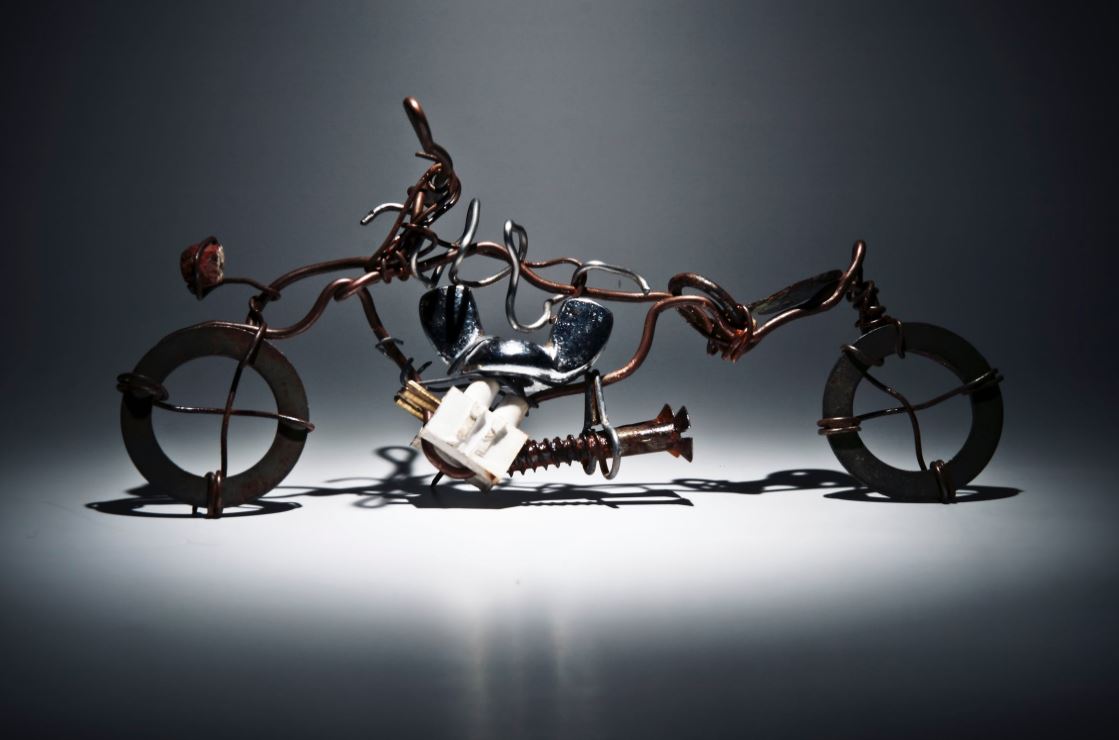
Sourcing your art supplies in your own unique way accomplishes something much more significant than simply lowering your next project’s bottom line. Your resourcefulness could lend your work a distinct touch that sets it apart with a signature personal flair or at least a reminder that a flood of creativity set into motion doesn’t always have to break the bank.
After all, if you want to achieve something truly individual, what better way to start than by taking your process off the beaten path? You never know when your improvised methods might inspire some up-and-coming, impressionable artist looking for their own quirky creative modus operandi.
Ask Around
“Starving” artists are nothing if not empathetic to fellow creators with stretched budgets. If you have a vision but no cash, reaching out to fellow artists and inquiring about old supplies you could take off someone’s hands or leads on affordable supplies and give a good home could yield just the materials you need. For want of a robust circle of kindred artists, glance around nearby dumpsters.
Once you remove the glass, it may take little more than some lattice from a local hardware retailer around the edges to transform a used window frame into a newly useful structure. A $5 t-shirt can produce up to 50 sheets of paper with access to a papermaking beater and the right know-how. Some universities have even established programs dedicated to recirculating and reusing discarded materials among art majors through sustainability grants. Whatever you create, be open to thinking outside the box. Everything from flower parts to doll shoes can find a new life and purpose in your art if you just give them a chance and use your imagination.
Be Eco-friendly
Approach your next project with a challenge in mind: achieve maximum ingenuity and creativity while minimizing your environmental footprint. Sourcing art supplies in an eco-friendly fashion is not always easy. If anything, keeping everything as green as possible entails more time-consuming legwork and effort. The transition to a fully non-toxic studio takes some artists years between researching environmentally gentle sourcing and trial-and-error testing of sustainable practices.
Start with a commitment to shopping locally as often as possible, since your support benefits your immediate community and the materials you buy from hole-in-the-wall shops and local distributors likely come with lower shipping expenses and a more modest transportation-based carbon impact. This is a great place to immerse yourself in the habit of learning as much as you can about the products you buy and how their production and shipping affects our planet. Keeping your studio green also integrates well with the above-mentioned suggestion of recycling, reusing and innovatively repurposing as many raw materials and supplies as possible.
Make Your Own
If you really want to source your art supplies sustainably, make your own. Take a look around your space. Do you happen to have eggs, some paintbrushes, a few small bowls and some liquid watercolors or food coloring? Congratulations. You can make egg tempera paints not entirely unlike those favored by Botticelli, Giotto and Fra Angelico during the early Renaissance. Need an ample supply of sidewalk chalk for an ambitious mural? If you can cobble together plaster of Paris, a spoon, some cups for mixing, tempera poster paint and an ice cube tray or flexible silicone mold, then you have everything you need to make all the chalk you could want. One benefit of making your own materials: total quality control.
Found Art
In many instances, pieces of “junk” can be works of art in the rough themselves. Need proof? Look no further than your nearest auto wrecking yard or auto parts retailer. Provided one has just the right technical expertise, the spacious back seat of a broken-down classic sedan can find new life as a kitschy couch. A restored hood could become an attractive awning. You could even reincarnate pickup truck beds as sizable shelving units.
Granted, fully realizing these projects may require access to industrial equipment and generous workspace. However, think of each auto part as a component of a larger piece already molded into almost exactly the shape and size you needed in the first place. By that logic, more than half the work has already been done for you.
Artistic brilliance doesn’t always begin with an initial brushstroke or shaping the first limb of a sculpture. Sometimes, it starts with being committed enough to a creative vision to contrive anything one needs from whatever is lying around gathering dust. Ultimately, that extemporized resourcefulness becomes one more vibrant layer of personal expression. It’s the ultimate win-win for a creatively restless mind.


